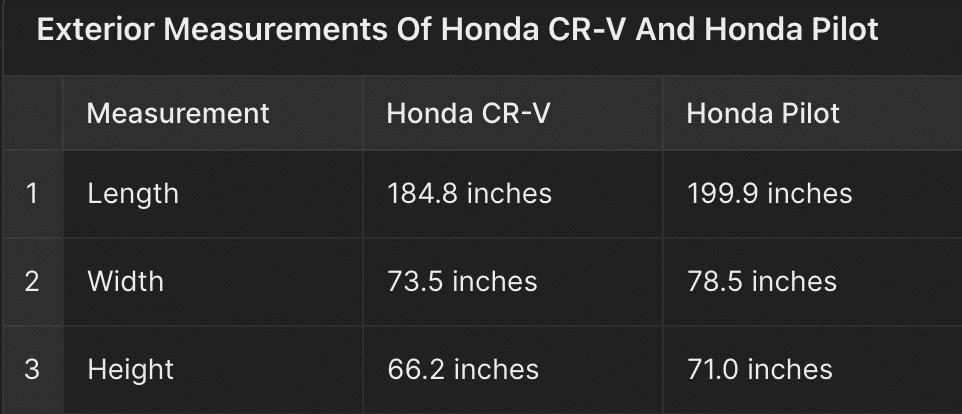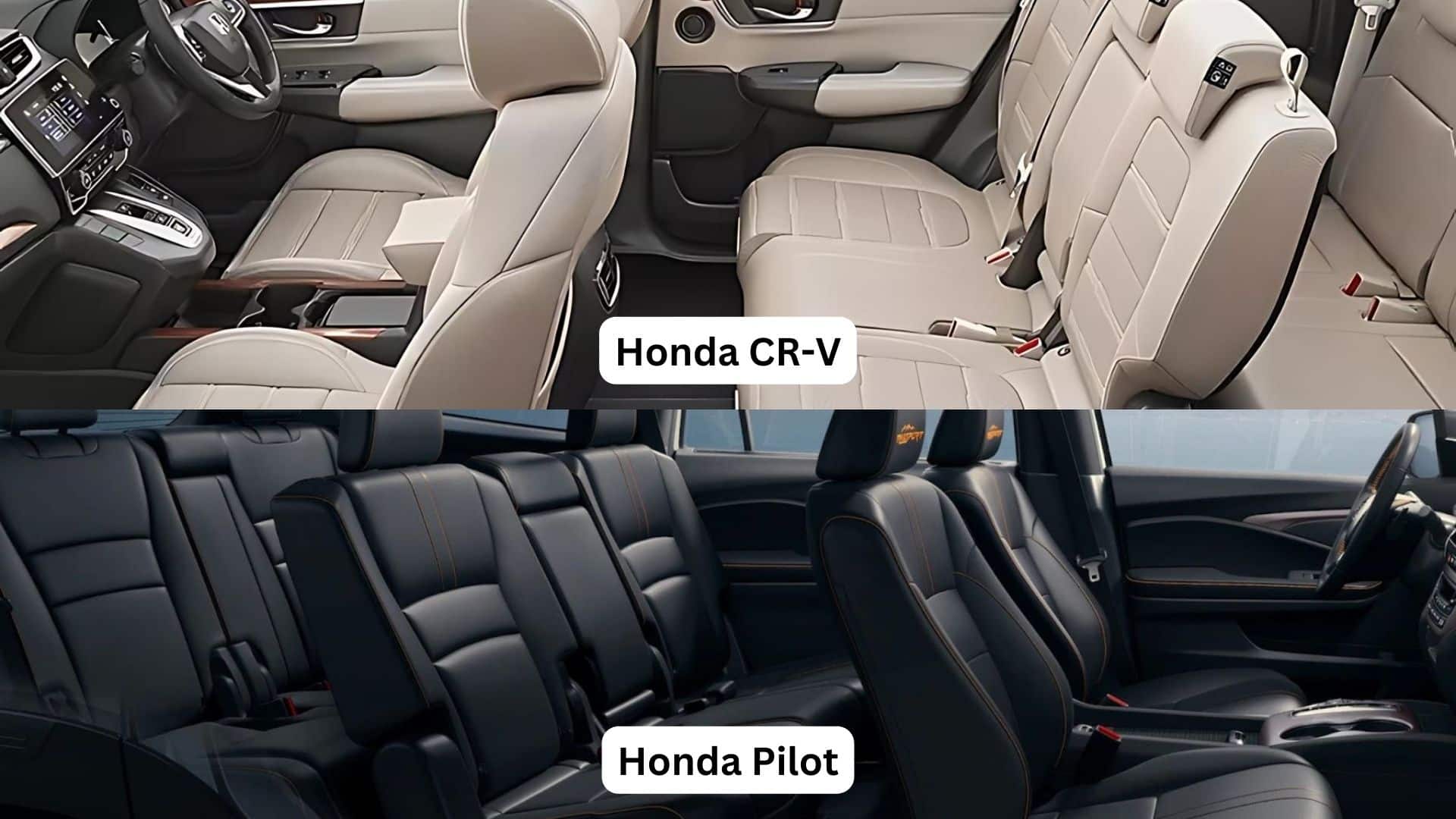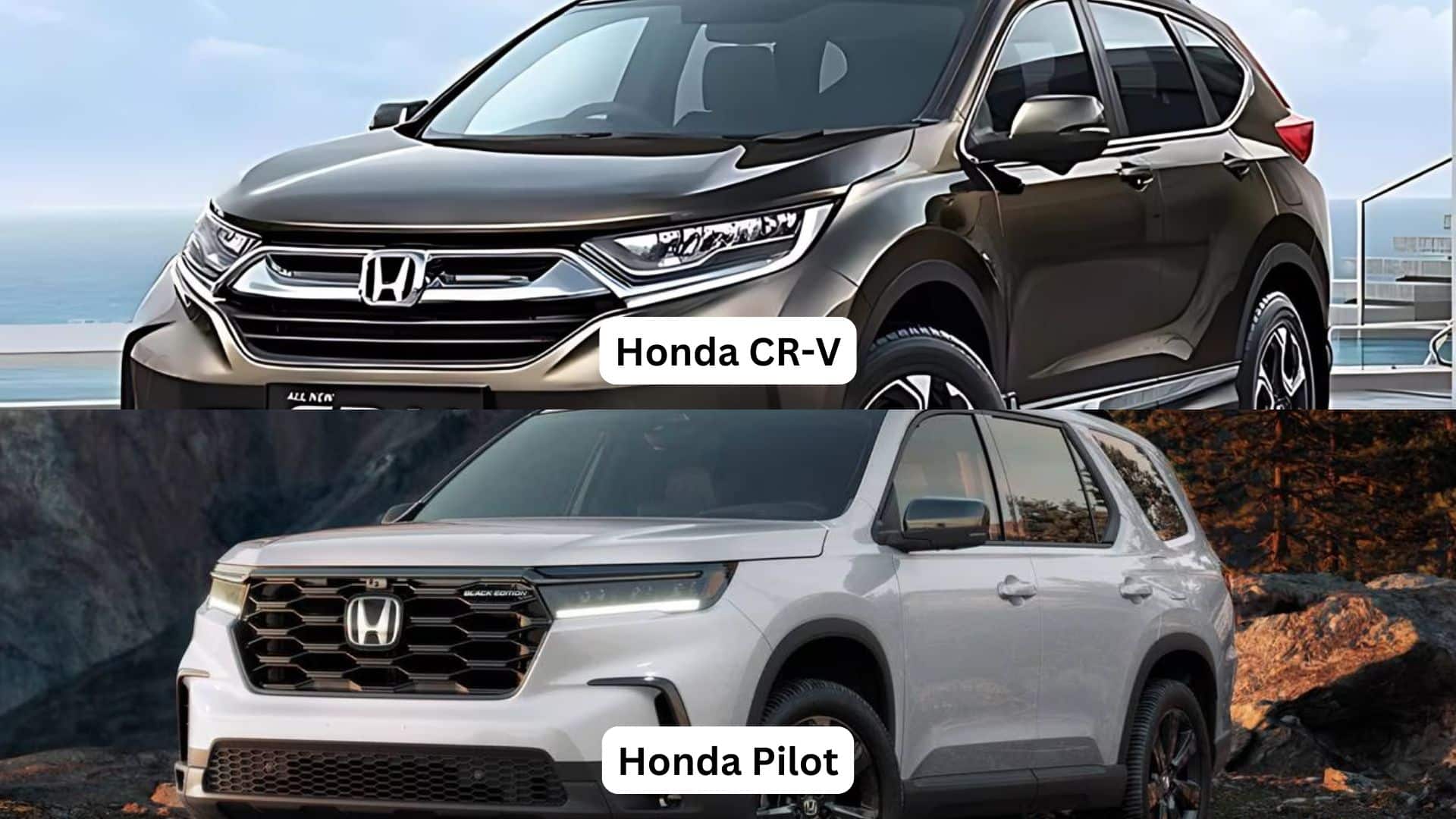Families looking at Honda SUVs often struggle to choose between the CR-V and the Pilot. Many people aren’t sure which one best fits their needs, especially when considering interior space.
Both cars offer comfort but differ in size and what they include. This comparison will show you the main differences between the CR-V and the Pilot.
We’ll look at how many people can sit, how much stuff you can pack, and what features you’ll find inside. By the end, you’ll know enough to pick the Honda that works for how you live.
Look closely at these popular SUVs and compare them to space and usefulness.
Overview of the Honda CR-V and Honda Pilot

The Honda CR-V and Pilot are two well-liked SUVs in Honda’s lineup. Each car serves a different purpose and fits various family needs.
The CR-V is a compact SUV that’s great for small families or people who want a car that’s easy to drive in the city. It’s smaller than the Pilot but still roomy inside. The CR-V is known for being good on gas and easy to park.
On the other hand, the Pilot is a bigger SUV meant for larger families or those who need more space. It can fit more people and carry more items. The Pilot is built for longer trips and has more power for towing.
While Honda makes both cars, they’re designed for different types of drivers. The CR-V works well for daily city use, while the Pilot is better for big families and road trips.
Dimensions and Space: CR-V vs Pilot
Size matters when choosing between the Honda CR-V and the Pilot. This section compares SUVs’ exterior and interior dimensions, helping you understand how their size differences affect passenger comfort and overall space.
1. Size Matters: Exterior Measurements

The Pilot is bigger, about 15 inches longer, 5 inches wider, and 5 inches taller than the CR-V.
2. Inside Space: Room for Everyone

3. What This Means for You?
The CR-V offers plenty of space for five people. Its rear seats are almost as roomy as the front, which is great for adults sitting in the back.
The Pilot can accommodate up to eight people. While its legroom in the first two rows is slightly less than that of the CR-V, it has more headroom and that extra third row.
This makes the Pilot better for big families or those carrying many passengers.
Seating Capacity and Comfort: CR-V vs Pilot

The number of seats and comfort level can make or break your SUV experience.
Here, we’ll explore how the CR-V and Pilot differ in seating arrangements and the comfort features each offers passengers.
1. Passenger Capacity: How Many Can You Fit?
The CR-V and Pilot cater to different seating needs. The CR-V comfortably seats five people, making it ideal for small families or groups.
Its layout includes two front seats and a rear bench that fits three. This setup works well for daily commutes and weekend trips, offering a good balance of space and comfort.
The Pilot is built for larger groups. It can seat up to eight people across three rows, making it perfect for big families or those who often carpool.
The Pilot’s extra row and larger overall size make it a great choice for long road trips or transporting sports teams.
2. Flexible Seating: Adapting to Your Needs
Both vehicles offer flexible seating arrangements. The CR-V features 60/40 split rear seats that fold flat, creating more cargo space when needed.
The seats are easy to adjust, with simple levers for quick changes.
The Pilot takes flexibility a step further. It has 60/40 split seats in both the second and third rows.
Some models even offer a removable middle seat in the second row and one-touch folding seats for easy access to the third row.
3. Comfort Features: From Basic to Luxurious
Both SUVs prioritize comfort. The CR-V has cloth seats as a standard, and leather is available in higher trims.
Most models include heated front seats and a power-adjustable driver’s seat.
The Pilot offers similar basic comforts but adds more luxury options. Higher trims feature leather seats, heated front, and second-row seats, and cooled front seats on top models.
4. Space and Accessibility
The CR-V provides ample headroom and legroom for all passengers, with wide-opening doors for easy entry and exit. Thanks to good sound insulation, the cabin is notably quiet.
The Pilot, being larger, offers even more space. It’s especially good for taller passengers, with generous headroom throughout.
Some models also feature a panoramic roof, adding to the open, airy feel of the cabin.
Your choice between the CR-V and Pilot will likely depend on how many people you usually transport and how much you value extra comfort features.
The CR-V is great for everyday comfort and smaller groups, while the Pilot shines when accommodating more passengers with additional luxury touches.
Cargo Space and Utility: CR-V vs Pilot

For many SUV buyers, cargo capacity is a top priority. This section breaks down the cargo space in the CR-V and Pilot and examines the clever storage solutions each vehicle provides for everyday needs.
1. Cargo Capacity Comparison
Regarding cargo space, the CR-V and Pilot offer generous room, but their capacities differ.
The CR-V provides 39.3 cubic feet with all seats up and 76.5 cubic feet with rear seats folded. This ample space is great for everyday use and small family trips.
The cargo area is easily accessible and well-shaped for bulky items. The Pilot, being larger, offers even more space.
It has 18.6 cubic feet behind the third row, 55.9 cubic feet with the third row folded, and a whopping 109.2 cubic feet with both the second and third rows folded.
This makes it ideal for big families or those who frequently need to haul large loads.
2. Flexible Interior Design
Both SUVs feature smart designs to maximize utility. The CR-V has 60/40 split-folding rear seats, a low-load floor for easy loading, and wide-opening rear doors.
Its design allows for quick transitions between passenger and cargo configurations.
The Pilot takes this further with 60/40 split-folding second and third rows, one-touch folding second-row seats, and a flat load floor when all rear seats are folded.
This offers more options for balancing passenger space and cargo needs.
3. Storage Solutions and Convenience Features
Both models offer features to make loading, unloading, and organizing easier. The CR-V has a center console with a sliding tray, door pockets with bottle holders, a retractable cargo cover, and an available power tailgate.
The Pilot includes a hidden storage well in the cargo area, underfloor storage in some models, multiple cup holders and small-item storage throughout, and an available hands-free power tailgate.
Despite its extra row of seating, the Pilot doesn’t compromise on smart storage solutions, offering hidden compartments and underfloor storage that families often find useful on long trips.
Design and Aesthetics: CR-V vs Pilot

Beyond functionality, the look and feel of your SUV’s interior can greatly impact your driving experience.
We’ll compare Honda’s design choices for the CR-V and Pilot, from dashboard layout to material quality.
1. Dashboard Layout and Controls
The CR-V and Pilot feature well-designed dashboards, each with its style. The CR-V’s dashboard has a clean, modern design with a 7-inch touchscreen standard (9-inch available on higher trims) and physical knobs for climate control and volume.
It feels more car-like, focusing on sleek design and controls that are easy to reach and use while driving.
The Pilot’s dashboard has a more rugged, SUV-like appearance with a 7-inch touchscreen standard (9-inch on upper trims) and larger buttons and knobs for easy use even with gloves on.
2. Infotainment Systems
Both SUVs offer user-friendly infotainment systems with Apple CarPlay and Android Auto. Higher trims in both models get larger 9-inch screens.
The Pilot’s screen is positioned slightly higher on the dash for better visibility, which might be preferable for some drivers as it requires less eye movement away from the road.
3. Interior Materials and Ambiance
Honda has considered the materials used in both SUVs. The CR-V aims for a more upscale feel, with soft-touch materials on most surfaces, limited use of hard plastics, and brushed metal-look accents on higher trims.
The Pilot balances comfort with durability, using more durable materials throughout, softer materials on touchpoints, and available leather that feels slightly more premium.
The CR-V’s interior has a modern, slightly upscale, cozy, and car-like feel, focusing on comfort for daily driving.
The Pilot’s cabin feels more spacious and rugged, with an adventurous vibe that matches its larger size and capability.
Conclusion
As we wrap up our comparison of the Honda CR-V and Pilot, it’s clear that both SUVs offer unique strengths.
The CR-V shines with its compact size, fuel efficiency, and car-like comfort, making it ideal for daily city driving and small families.
The Pilot, with its larger size and extra seating, is designed for bigger families and those needing more cargo space.
Your choice between the CR-V and Pilot ultimately depends on your lifestyle needs. Consider factors like family size, typical cargo needs, and driving preferences.
Whether you opt for the elegant CR-V or the spacious Pilot, you’ll get a quality Honda SUV.
Are you ready to see these vehicles in person? Visit your local Honda dealership to test drive and experience their differences firsthand. Your perfect Honda SUV is waiting for you!

